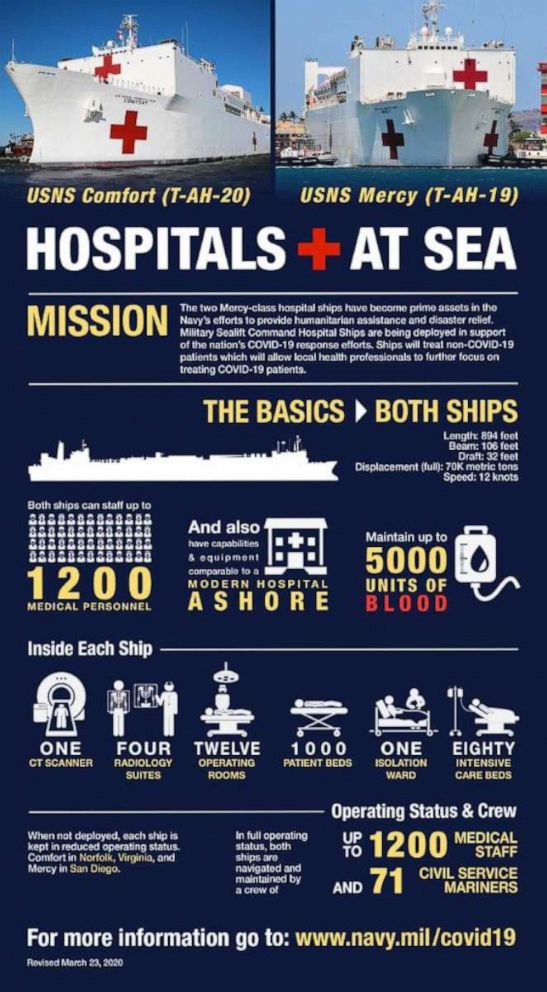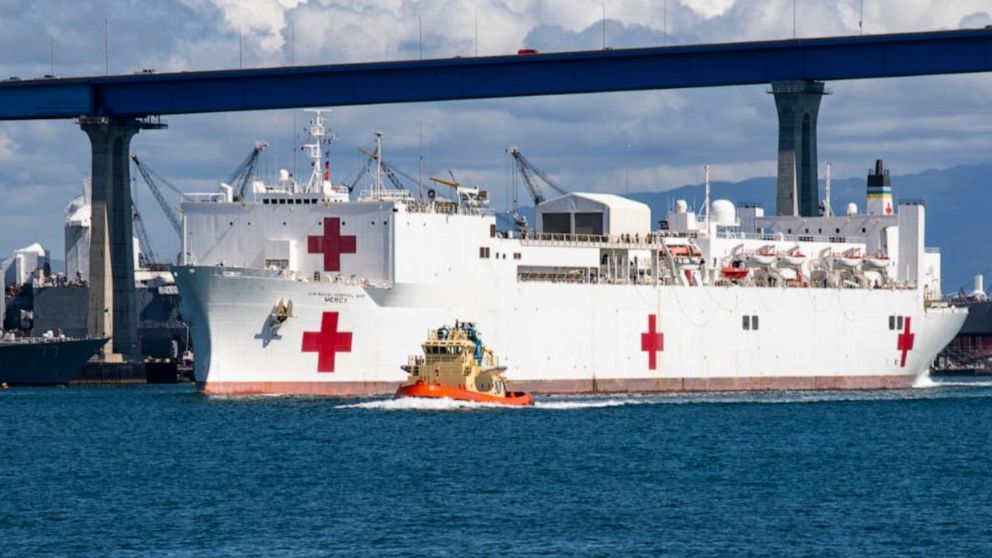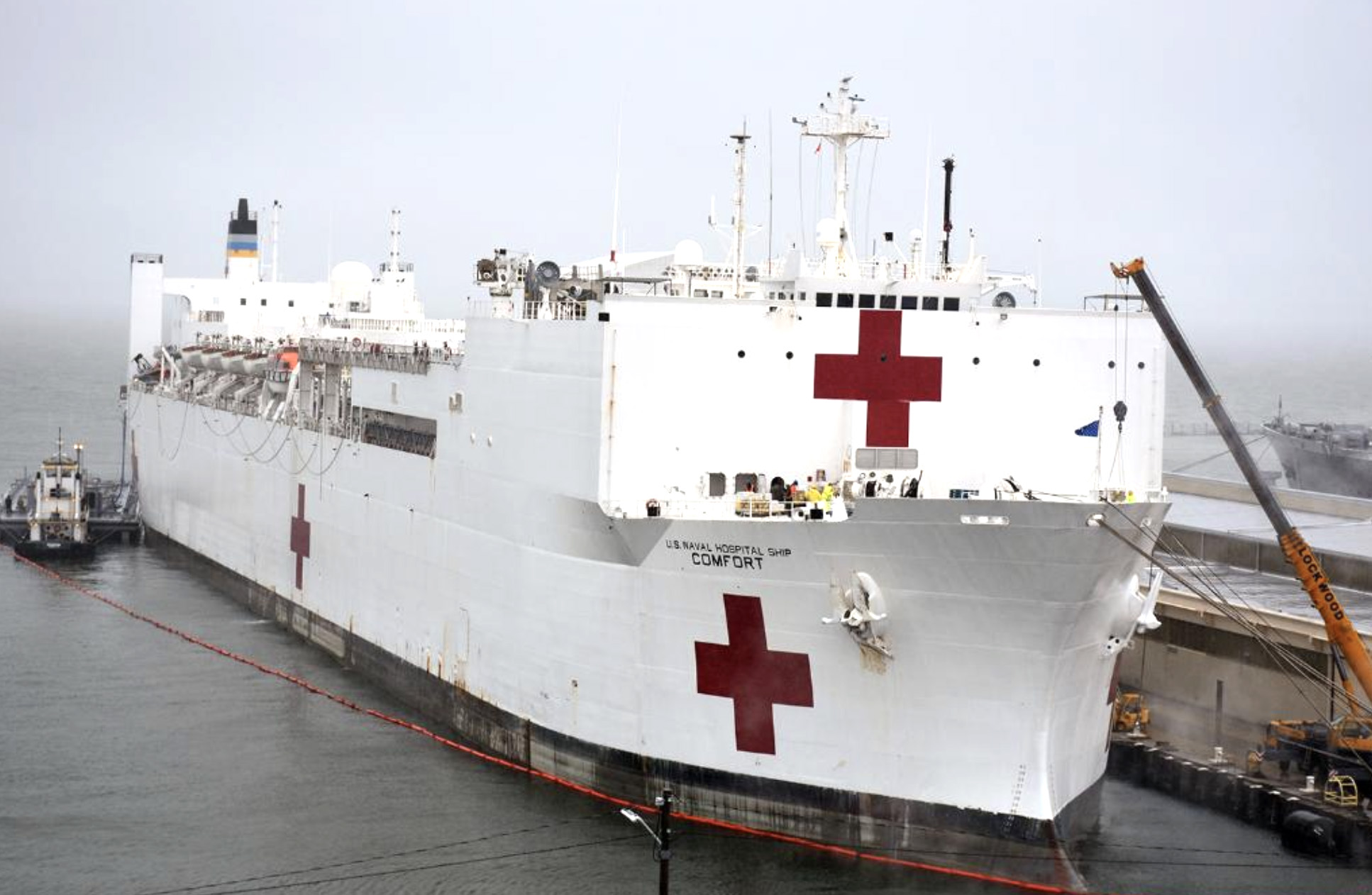What to know about the Navy hospital ships coming to New York and California
The ships will treat patients who don't have coronavirus.
To help medical professionals focus on treating novel coronavirus patients, the Navy has deployed two hospital ships, to New York and to California, that will be used to treat people suffering from other ailments.
The United States Naval Ships Mercy and Comfort each are 894-foot vessels stocked with life-saving equipment.
As of Thursday, California had almost 800 confirmed cases of COVID-19 and New York State had over 30,000, including more than 17,000 in the five boroughs.
The USNS Mercy’s medical treatment facility has a medical crew, officials said, from the "Navy's Bureau of Medicine and Surgery responsible for operating and maintaining one of the largest trauma facilities in the United States."
USNS Mercy left San Diego for Los Angeles last week, and USNS Comfort arrived in New York Harbor from Norfolk, Virginia, on Monday.
Capt. Patrick K. Amersbach, commanding officer for the USNS Comfort, said his staff is ready and available to receive their first patients.
"I have never been more proud of what we're doing for our nation and the people of New York City," Amersbach added.
What's inside these floating hospitals?
-- Up to 1,200 Navy medical and communications personnel and more than 75 civil service mariners.
-- Up to 5,000 unit of blood
-- 12 fully equipped operating rooms
-- 1,000 patient beds
-- 8 Intensive Care Unit beds
-- 4 radiology suites
-- 2 oxygen-producing plants
-- 1 isolation ward

Both ships also are equipped with digital radiological services, a medical laboratory, a pharmacy, an optometry lab and a CAT scan. They also have a helicopter deck capable of landing large helicopters and side ports to take on patients at sea.
Tune into ABC at 1 p.m. ET and ABC News Live at 4 p.m. ET every weekday for special coverage of the novel coronavirus with the full ABC News team, including the latest news, context and analysis.


What to know about Coronavirus:
- How it started and how to protect yourself: Coronavirus explained
- What to do if you have symptoms: Coronavirus symptoms
- Tracking the spread in the US and Worldwide: Coronavirus map




